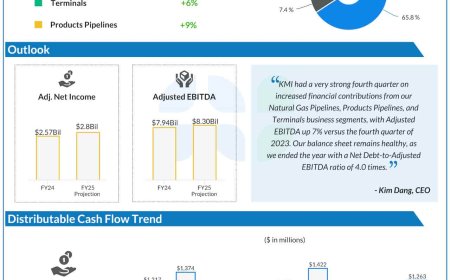The Evolution of Trade Agreements and their Impact on Global Economics
Trade agreements have greatly defined the modern economy. They are formal pacts between countries stating how they would conduct trade with one another. They can be quite powerful in that they do not only change the fate of businesses involved but also daily life on earth. It is therefore of great interest to learn how […] The post The Evolution of Trade Agreements and their Impact on Global Economics appeared first on Insights Success.

Trade agreements have greatly defined the modern economy. They are formal pacts between countries stating how they would conduct trade with one another. They can be quite powerful in that they do not only change the fate of businesses involved but also daily life on earth. It is therefore of great interest to learn how trade agreements evolved as a basis for understanding the impact they have on global economics.
Early Days of Trade Agreements
Trade agreements existed from the very beginning. Indeed, merchants used to reach agreements on exchanging their merchandise, without any type of guidelines. These, therefore, evolved into better agreements over time. Trade agreement history dates back to Middle Age when countries started putting some taxes on goods brought from other places in the world. This set up of tariffs would make imported commodities to be very expensive, creating a reason for countries to negotiate terms that would satisfy them both.
As the world became more interdependent through exploration and colonization, formal treaties emerged. For instance, the Treaty of Paris in 1783 set terms for trade between the United States and Britain after the American Revolution. Such treaties were often aimed at specific goods, which helped some nations gain trade advantages while protecting their own economies.
The Emergence of Modern Trade Agreements
The 20th century was a turning point in the way trade agreements were designed. After World War II, countries realized that there was a need for a more cooperative approach to international trade. This led to the establishment of the General Agreement on Tariffs and Trade (GATT) in 1947. GATT aimed at reducing tariffs and promoting trade among its member nations. It was a significant step towards creating a more open and interconnected global economy.
With the increase in the world economy, trade agreements became more complex. GATT evolved into the WTO in 1995 and widened the rules for international trade and brought in more countries. The WTO also incorporated mechanisms for settling trade disputes and thereby created a more defined framework for countries to conduct their trade relationships.
Trade Agreements and Economic Growth
Trade agreements are often viewed as an essential factor that can stimulate economic development. Lower prices for the consumer, increased variety, and higher competition among businesses arise from the reduction of tariffs and, in some cases, elimination. The imports and exports of countries become cheaper, promoting the growth of domestic industries due to the bigger markets opened up for the former.
For instance, the export increases in free trade agreements that nations sign. There is, therefore, creation of jobs and boosting local economies. In addition, there are more choices and low prices to consumers. Having a greater variety of goods from different countries boosts the shopping experience. It encourages businesses to be innovative.
However, the results are not always evenly dispersed since while some industries gain benefit from the trade, there is a chance others struggle with it. It also becomes a case whereby specific local industries cannot sell competing against cheaper imports and start floundering or shut up. This leads to job losses, further disorganizing a respective economy in a respective regional location. Governments are responsible for implementing supportive measures upon the affected people as follows:
The Role of Regional Trade Agreements
Regional trade agreements have been increasingly popular over the last few decades. They involve a few countries and, most often, focus on geographic regions. Examples are NAFTA, which has evolved into USMCA, and the European Union. Regional trade agreements help strengthen economic ties between the member countries of that particular region.
Regional agreements are good since they lead to an integrated economy, less complex trade regulations, and enhanced cooperation. Countries working together can solve common economic problems and stimulate growth. On the other hand, regional agreements can cause friction with other countries outside the pact because these nations might feel excluded from the positive impact of more trade.
The Future of Trade Agreements
Looking ahead, trade agreements are likely to evolve further. Factors such as technology, environmental concerns, and global pandemics will shape how countries interact with one another in terms of trade. The rapid advancement of digital technology has opened new avenues for online trade, allowing businesses to reach global consumers more easily.
Moreover, growing awareness of climate change and sustainability issues is pushing countries to consider environmental impacts in trade agreements. Future pacts may include commitments to reducing carbon footprints, promoting sustainable practices, and ensuring that trade benefits all nations fairly.
The adaptability of future trade agreements will be of utmost importance. The world economy is increasingly interconnected, implying that a change in any region will affect another. Economic changes, geopolitical tensions, and pandemics are aspects that need to be included in trade agreements.
Conclusion
Trade agreements have evolved from informal deals between merchants to complex international treaties. From their inception, these agreements have had a profound impact on global economics. Their effects can be seen across nations, industries, and individual consumers. As the world continues to change, trade agreements will need to evolve to meet new challenges and opportunities, ensuring that they support economic growth while addressing concerns such as fairness and sustainability.
The post The Evolution of Trade Agreements and their Impact on Global Economics appeared first on Insights Success.











































